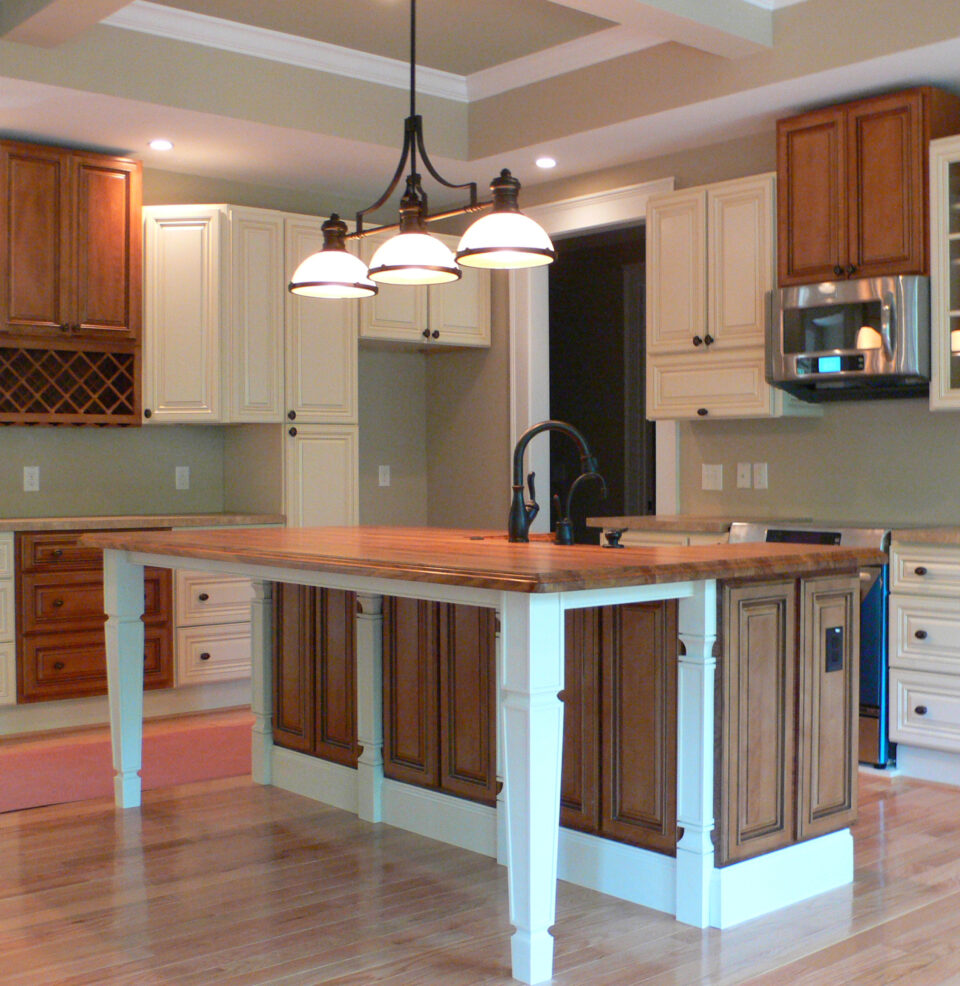The Significance of a Sturdy Cooking Area Island Leg in Developing a Useful Cooking Area
A durable kitchen island leg offers as a basic part in developing a practical cooking environment, giving needed assistance for both the kitchen counter and different kitchen tasks. As kitchen areas develop into multifunctional locations for food preparation, eating, and interacting socially, the option of materials and style considerations for island legs comes to be progressively vital.
Advantages of Sturdy Island Legs
Offering necessary support, tough kitchen area island legs play a pivotal duty in enhancing the functionality and resilience of cooking area islands - kitchen island leg. These legs not only birth the weight of the countertop and any kind of extra items put on the island, but additionally add to the total stability of the framework. A well-supported kitchen area island ensures that it stays practical and upright, also under heavy usage, which is particularly crucial in busy kitchen area settings
Additionally, tough island legs can enhance the visual allure of the kitchen. They supply a strong framework that can enhance various style styles, from modern-day to traditional. This convenience enables property owners to tailor their cooking area islands according to personal taste while making sure that the architectural stability remains uncompromised.
Along with their helpful role, durable kitchen area island legs can likewise enhance security. A stable island decreases the danger of mishaps brought on by tipping or tottering, which is specifically essential in homes with kids or elderly individuals. In addition, solid legs can assist in a smooth flow of tasks, permitting efficient meal preparation and social interactions within the cooking area space. Inevitably, buying durable kitchen island legs is necessary for a useful and aesthetically pleasing cooking location.
Materials for Kitchen Island Legs
When selecting products for kitchen area island legs, resilience and aesthetic appeal are essential variables to think about. One of the most usual materials consist of hardwood, steel, and engineered wood, each offering distinct advantages.
Hardwood, such as cherry, oak, or maple, is a traditional choice because of its stamina and classic elegance (kitchen island leg). It can withstand substantial weight and is resistant to put on, making it excellent for high-use cooking area environments. Furthermore, hardwood can be discolored or repainted to enhance different cooking area styles
Steel legs, frequently crafted from stainless-steel or wrought iron, provide a contemporary and commercial look. They are unbelievably strong and can support substantial loads while being immune to moisture and heat, which is useful in a cooking area. Steel legs can additionally be quickly cleansed, enhancing their practicality.

Layout Factors To Consider for Stability
The selection of products for kitchen island legs directly influences the design factors to consider for stability. When creating a kitchen area island, it is extremely important to examine the weight-bearing ability of the picked materials. Larger materials, such as solid timber or metal, normally supply higher security, especially under the tension of day-to-day usage.
Additionally, the leg style should integrate correct geometry to enhance security. A larger base raises the assistance area, minimizing the threat of tipping or wobbling. Consideration must also be provided to the elevation of the legs; disproportionate leg sizes can bring about imbalance, jeopardizing the overall stability of the island.
Furthermore, the circulation of weight across the island is critical. Making sure that the leg positioning straightens with the heaviest components, such as appliances and countertops, will additionally improve security.
Maintenance Tips for Long Life

Depending on the material of the legs-- whether wood, steel, or composite-- suitable cleansing approaches ought to be utilized. Metal legs may call for a light gloss to stop rust and maintain their appeal.
If the kitchen area island experiences heavy usage, think about reinforcing the legs with additional braces or sustains to boost sturdiness. By adhering to these upkeep pointers, property owners can ensure their cooking area island legs continue to be robust and useful for years to come.
Choosing the Right Leg Design
Normal maintenance ensures that cooking area island legs remain functional view and sturdy, however choosing the ideal leg design is just as important for both aesthetic appeals and support. The selection of leg design can considerably influence the overall design and consistency of your kitchen area.

Functionality is another essential element. For circumstances, thicker legs or those with a tough base can sustain heavier countertops and equipment, enhancing the island's energy. On the other hand, slim legs might produce a ventilated appearance, appropriate for lighter designs but potentially much less encouraging.
Conclusion
In recap, the value of durable kitchen island legs can not be overemphasized in the development of a functional my link food preparation area. These legs give necessary assistance, improve security, and contribute to the total aesthetic of the kitchen.
A tough kitchen area island leg offers as an essential component in developing a functional food preparation environment, supplying required assistance for both the counter top and various cooking area activities.Supplying important assistance, sturdy kitchen area island legs play a critical function in enhancing the capability and longevity of kitchen islands. Eventually, spending in durable kitchen area island legs is necessary for a useful and visually pleasing cooking area.
Factor to consider should likewise be provided to the elevation of the legs; disproportionate leg sizes can lead to imbalance, compromising the general stability of the island.
Wood legs supply heat and a classic look, while steel legs supply a industrial and contemporary feeling.
Comments on “The Leading Kitchen Island Leg Styles to Enhance Any Kind Of Style Aesthetic”